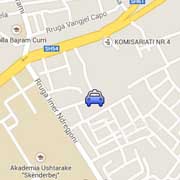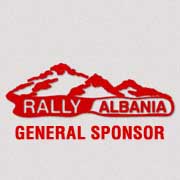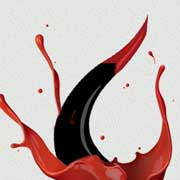-
Tirana city center
-
Skanderbeg Square
Skanderbeg statue, albanian's national heroe.
-
Buildings and colors
-
National Museum of History

-
Tirana by night
Tirana, capital city of Albania
A short description of Tirana and its history.
Tirana (Albanian: Tiranë, Tirana or Tirona) is the capital and the largest city of Albania. Modern Tirana was founded as an Ottoman town in 1614 by Sulejman Bargjini, a local ruler from Mullet, although the area has been continuously inhabited since antiquity. Tirana became Albania's capital city in 1920 and has a population of 421,286, with metro area population of 763,634. The city is home to many universities and is the center of the political, economical, and cultural life of the country.
The Municipality of Tirana is located at (41.33°N, 19.82°E) in Tirana District, Tirana County on the river Ishëm, about 32 kilometers (20 mi) inland. Tirana's average altitude is 110 meters (360 ft) above sea level and its highest point measures 1,828 m (5,997.38 ft) at Mali me Gropa. The city is mostly surrounded by hills, with Dajti Mountain on the East and a slight valley opening on the North-West overlooking the Adriatic Sea in the distance. The Tiranë river also runs through the city, whereas the Lanë river is a brook. The city borders the surrounding municipalities of Paskuqan, Dajt, Farkë, Vaqarr, Kashar, and Kamëz. It also contains a total of four artificial lakes: the Tirana Artificial Lake around which was built the Big Park, the Kodër-Kamëz Lake, Farka Lake, and Tufina Lake. Tirana is on the same parallel as Naples, Madrid, Istanbul, and New York, and on the same meridian as Budapest and Kraków.
The area occupied by Tirana has been populated since Paleolithic times dating back 10,000 to 30,000 years ago as suggested by evidence from tools found near Mount Dajt's quarry and in Pellumba Cave. As argued by various archaeologists, Tirana and its suburbs are filled with Illyrian toponyms as its precincts are some of the earliest regions in Albania to be inhabited.
The oldest discovery was a mosaic, dating back to the 3-rd century A.D., with several other remains found near a medieval temple at Shengjin Fountain in eastern suburbs. A castle possibly called Tirkan or Theranda whose remnants are found along Murat Toptani Street, was built by Emperor Justinian in 520 AD and restored by Ahmed Pasha Toptani in the 18th century. The area had no special importance in Illyrian and classical times. In 1510, Marin Barleti, an Albanian Catholic priest and scholar, in the biography of the Albanian national hero Skanderbeg, Historia de vita et gestis Scanderbegi Epirotarum principis (The story of life and deeds of Skanderbeg, the prince of Epirotes), referred to this area as a small village.
On 8 February 1920, the Congress of Lushnjë proclaimed Tirana as the temporary capital of Albania which had acquired independence in 1912. The city retained that status permanently on 31 December 1925. In 1923, the first regulatory city plan was compiled by Austrian architects. The center of Tirana was the project of Florestano de Fausto and Armando Brasini, well known architects of the Benito Mussolini period in Italy. Brasini laid the basis for the modern-day arrangement of the ministerial buildings in the city centre. The plan underwent revisions by Albanian architect Eshref Frashëri, Italian architect Castellani, and Austrian architects Weiss and Kohler. The rectangular parallel road system of Tirana e Re district took shape while the northern portion of the main Boulevard was opened. On the political sphere, Tirana experienced tumultuous events such as intermittent attacks from the army of the Kingdom of Serbs, Croats and Slovenes and forces of Zogu on the Shkalla e Tujanit (Step of Tujan). In 1924, Tirana was at the center of a coup d'état led by Fan S. Noli. Since 1925, when they were banned in Turkey, the Bektashis, an order of dervishes who take their name from Haji Bektash, a Sufi saint of the 13th and 14th centuries, made Tirana their primary settlement. Modern Albanian parliamentary building served as a club of officers. It was there that in September 1928, Zog of Albania was crowned King Zog I, King of the Albanians.
According to preliminary data from 2011 national census, the population of Tirana within city limits is 421,286. Tirana County, which can be viewed as a metropolitan area, has a population of 763,634. Many large towns and villages within the county have merged with the city, due to urban sprawl, so they can be viewed as suburbs of Tirana. Some of the large suburbs, listed as separate towns, are Kamëz (67,301), Kashar (45,742), Paskuqan (37,313) and Farkë (22,713). Thus, it is fair to say that the urban area of Tirana has a population close to 600,000.
In 1703, Tirana had about 4,000 inhabitants and by 1820 the number tripled to 12,000. The first census conducted a few years after becoming capital showed a total population of 10,845. During the 1950s, Tirana is experiencing rapid industrial growth and the population increased to about 137,000. After the end of communist rule in 1991, Tirana experienced its fastest population growth when people from rural areas moved to the capital for better economic opportunities. In 1990, Tirana had 250,000 inhabitants, but the large-scale influx increased the population to well over 500,000. Stemming from historical migratory waves, Tirana is known for its unsurpassed hospitality represented in many traditional songs with the warm hospitality symbols of 'bread', 'salt', and 'heart'.
The largest hospital in Tirana is called Mother Theresa Hospital (Qëndra Spitalore Universitare Nënë Tereza), which is associated with University of Tirana, Faculty of Medicine. The Hospital is a 1,456-bed facility that offers comprehensive inpatient tertiary care to over 12,000 patients annually. The hospital is currently undergoing major changes in infrastructure and equipment. Recently, a number of private hospitals have been opened.
The main cultural institutions of Tirana are the National Theater, the National Theatre of Opera and Ballet of Albania, and the National Arts Gallery (Galeria Kombëtare e Arteve). Performances of renown world composers are regularly performed by the Symphonic Orchestra of the Albanian Radio and Television. The city serves as a regular venue for the Tirana Biennale, Tirana Jazz Festival, Summer Day, White Night on 28 November, Rally Albania, Netet e Klipit Shqiptar, and Tirana Fashion Week.
Recently, Tirana has been redesigning its identity to a more Mediterranean city lined with cafes and a significantly "vibrant" nightlife.
Zgjidhni Merr Taxi dhe standartin e larte te sherbimit taksi ne Tirane!











